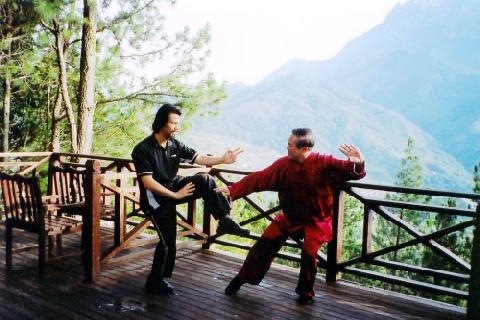SHAOLIN WAHNAM PRACTITIONERS HAVE DIFFERENT AIMS AND ASPIRATIONS THAN THOSE OF MONKS

Practitioners of Shaolin Wahnam aim to have good health and happiness
Question
Sifu, when Buddhism and Kung Fu mingled it was the same in essence as the traveling yogis of India and Himalaya. And living conditions linked the student and teacher to a very close connection so that direct transmission and teaching was guiding the student every step of the way.
Today modern society and life style makes a different challenge for living in such persistent practice. The Shaolin Temple seems to have changed for tourist interests, though Wudang Mountain appears to maintain their roots. (But I don't really know anything about Shaolin or Wudang, I just look this up on internet and make my own assumptions.) During the Cultural Revolution many masters fled to Asia and Indonesia. Are there still teachers and places for students to go to in order to find this kind of close training?
-- Spencermk
Answer
I don't know of any place today where students and teachers stay together for life like in the Shaolin Temple or on Wudang Mountain in the past to practice kungfu and spiritual cultivation. This does not mean there are no such places today, but I do not know of such places and I don't think there are.
The closest I knew of was Dr Yang Jwing Ming's noble project of getting dedicated students to stay with him in a retreat for 10 years to practice and revive the greatness of kungfu. I did not follow this project and therefore do not know of its progress.
Years ago I was offered a place on a scenic mountain as well as fund to build something like the Shaolin Temple to teach chi kung and Shaolin Kungfu. (This was even before I taught Taijiquan publicly, so the question of teaching Taijiquan in this retreat centre did not arise.) I declined this kind offer because I was not ready to dedicate myself to this secluded task. I preferred, and still prefer, travelling around the world teaching deserving students besides enjoying delicious food and seeing beautiful places with my dedicated students.
Later, Sifu Rama Roberto built a retreat centre on the Blue Mountain in Costa Rica. At first he wanted to call it the Shaolin Temple, but after discussion with me, he decided to call it Shaolin Wahnam Centre instead because he didn't intend to have any real monks there.
Although the Shaolin Wahnam Centre on the Blue Mountain is founded to preserve genuine chi kung, Shaolin Kungfu and Taijiquan, it is different from the Shaolin Temple and the Wudang Temple in the past. Besides not having monks, which would be a basic requirement for a temple, a crucial difference is that students and teachers do not stay together for life or for a long time at the Shaolin Wahnam Centre on the Blue Mountain. Although courses are conducted there throughout the year, different students attend different courses at different times for different objectices.
My son, Sifu Wong Chun Nga, also thought of setting up a Shaolin Wahnam Centre in Malaysia. I was not in favour of the idea for economic considerations. It would be too costly to upkeep. Although many students come to Malaysia yearly for my intensive and special courses, it would be more comfortable for them and much cheaper for me to conduct the courses in luxurious hotels, even when the money for the hotel accommodation were paid to maintain the centre.
Besides economic considerations, more important is the difference in aims and objectives between practitioners at the Shaolin Temple and Wudang Temple in the past and Shaolin Wahnam practitioners today.
Practitioners at the Shaolin and Wudang temples were monks. They had renounced all worldly affairs to live a temple life and practice the Shaolin or Wudang arts to attain Enlightenment.
Shaolin Wahnam practitioners do not want to be monks. They practice the arts taught in Shaolin Wahnam to make their own lives as well as the lives of other people more rewarding and meaningful here and now, including enjoying delicious food, enjoying wholesome sex and happy times with their friends and family members -- legitimate worldly pleasures not permitted to monks.
-- Grandmaster Wong Kiew Kit

Conducting chi kung and kungfu courses in luxurous hotels, like in Sabah, is more economical and more comfortable than maintaining a temple for this purpose
The above is reproduced from the thread 20 Questions for Grandmaster: Choy-Li-Fatt and Kungfu against Other Styles in the Shaolin Wahnam Discussion Forum.
LINKS
